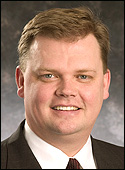Sep 27, 2004This week EPCglobal US, the U.S. chapter of EPCglobal, holds its second annual user conference and celebrates EPCglobal’s anniversary, as well as its own. The organizations have achieved a great deal over the past 12 months, according to Mike Meranda, president of EPCglobal US, but there's still a lot of work to be done.
"Our biggest achievement in the first year has been the growth in the momentum in EPC adoption and the increasing commitment of our community to the technology," Meranda says. "We're seeing adoption beyond our roots in the consumer packaged goods industry, most notably in the health care and automotive industries."
EPCglobal was set up as a nonprofit joint venture by the Uniform Code Council and EAN International to commercialize EPC technology in September 2003 (see EAN and UCC Form EPCglobal, Inc.). Individual chapters were set up in the United States, United Kingdom and many other countries to promote adoption locally.
Aside from promoting the use of EPC technology, EPCglobal’s main focus has been to develop a foundation for the organization. Two key achievements over the past year have been the creation of an intellectual property policy that all major RFID vendors support (see Patent Progress) and the establishment of a formal standards development process.
"These are important achievements because they facilitate participation by vendors in the creation of EPC standards," Meranda says. "It's work that no one enjoys doing. But we spent a lot of time on it and so did the community. The infrastructure we put in place is now facilitating the development of the Gen 2 standard."
Meranda concedes that there have been some contentious meetings over the next-generation EPC protocol, but he points out that 60 RFID vendors participated in those meetings and they have whittled down proposals based on ISO 180006-A, ISO 180006-B, EPC Class 0 and EPC Class 1 to a single proposal (see Consensus Reached on EPC Gen 2).
The consensus proposal, or so-called Chicago protocol, was scheduled to be published in early October. Meranda says that the publication will likely be delayed until late October or early November, as EPCglobal works through issues related to intellectual property claims made by Intermec Technologies (see Intermec Spells Out Licensing Plan). But, he says, the delay is not significant given that many technology providers are already working on products based on the Gen 2 draft specification.
"The good news is the majority of companies that will produce EPC Gen 2 tags and readers were at the table the whole time [the standard was being developed]," he says. "I think people will be surprised how quickly the community will have production-quality products and production quantities available."
EPCglobal has also made progress in developing the EPCglobal Network, which is needed to share EPC data among business partners. In January, it awarded a multiyear contract to VeriSign to run the root Object Name Service directory, which is needed to look up information associated with EPCs (see VeriSign to Run EPC Directory).
EPCglobal has been working to develop standards that will enable all companies to share data using something called the EPC Information Services—distributed network applications that will allow companies to track and trace products, share data with business partners and achieve business value from EPC data.
A strategic working group is looking at what EPCglobal needs to accomplish next year. The focus will be on evolving standards, identifying business cases and building out pieces of the network to support elemental track and trace so companies can get benefits quickly from deploying the EPC technology. The organization will also continue to create business action groups for new industries where a core group of companies are committed to deploying the technology (business action groups have already been set up for fast-moving consumer goods and for health and life sciences).
This year has been a hectic one for everyone involved with the development of EPC standards, and Meranda expects the pace of EPCglobal's work to only increase in 2005. "There will be an enthusiastic and voracious appetite for EPCglobal Network components that are the source of value of EPC," he says. "Companies are resolving the physics issues, so next year they will be looking to achieve value from network connectivity. We want to support their efforts."


